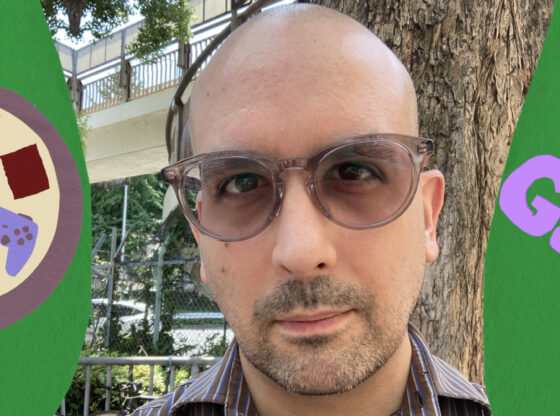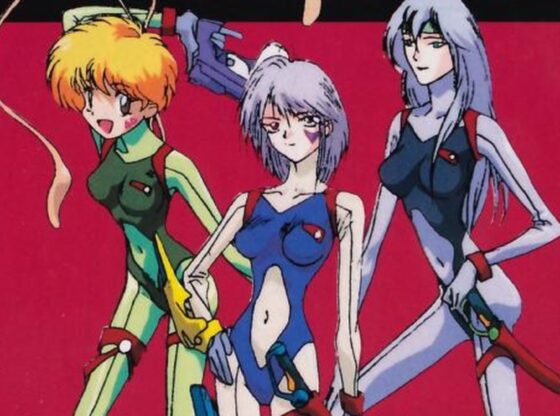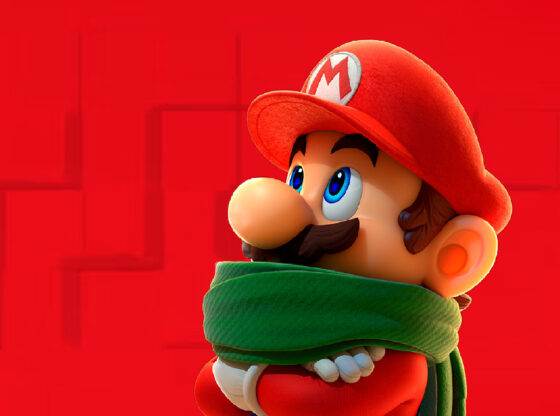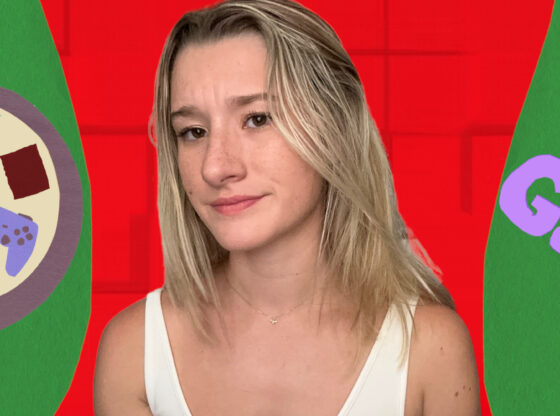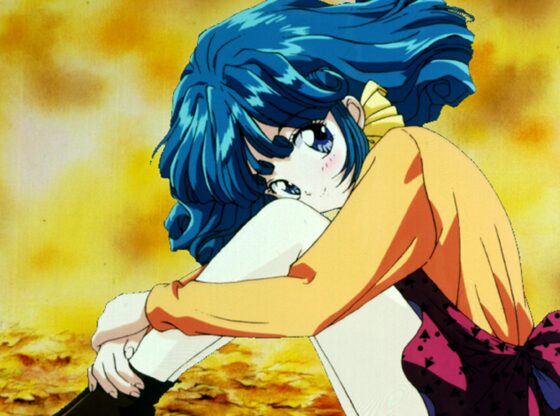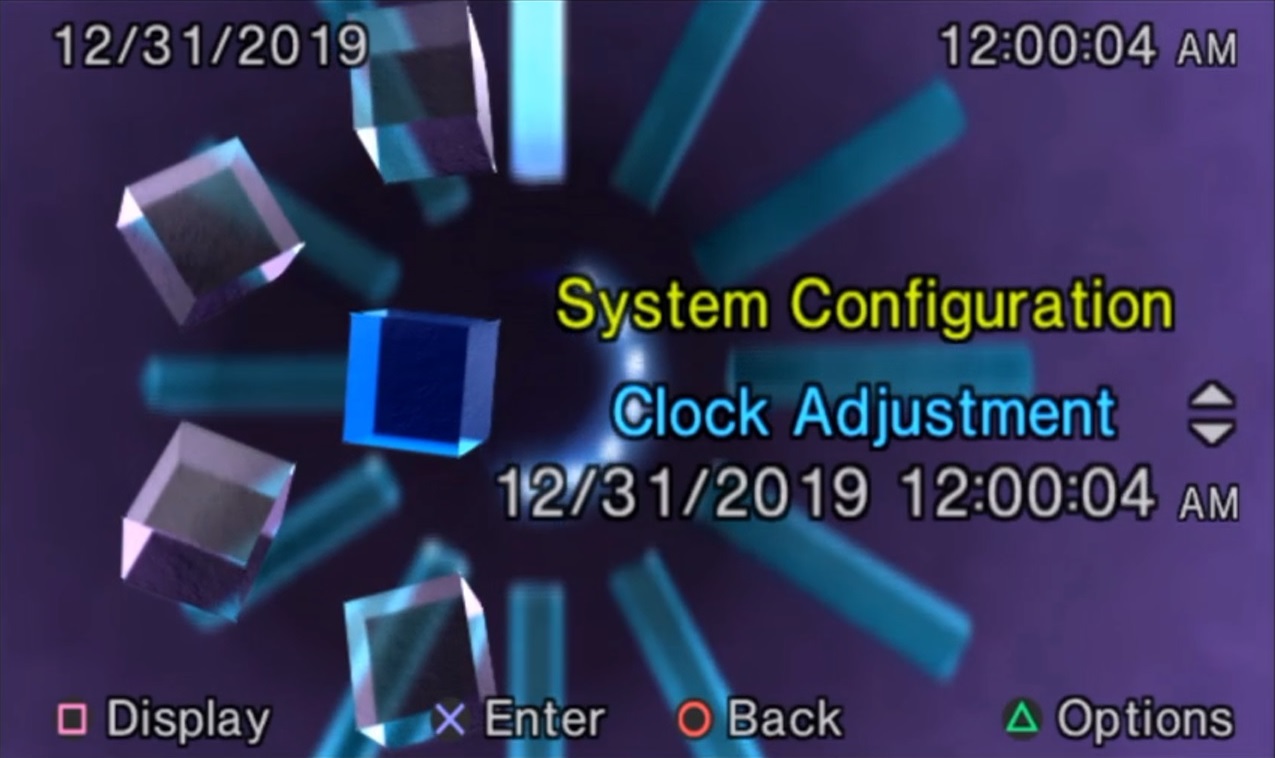
Happy almost not 2019! We did it. If you’re reading this, you’re still alive. I’m glad.
For myself, I feel like it was a good year for games. I had some downs with titles like Mighty Gunvolt Burst. But otherwise, I really enjoyed where I spent my time. I even found some new favorites.
Per usual, I wanted to give a handful of thoughts I had from 2019 as well as what’s next for 2020. Plus, I want to highlight some titles I was surprised by.
Five Thoughts in 2019
Downloadable Bandaids
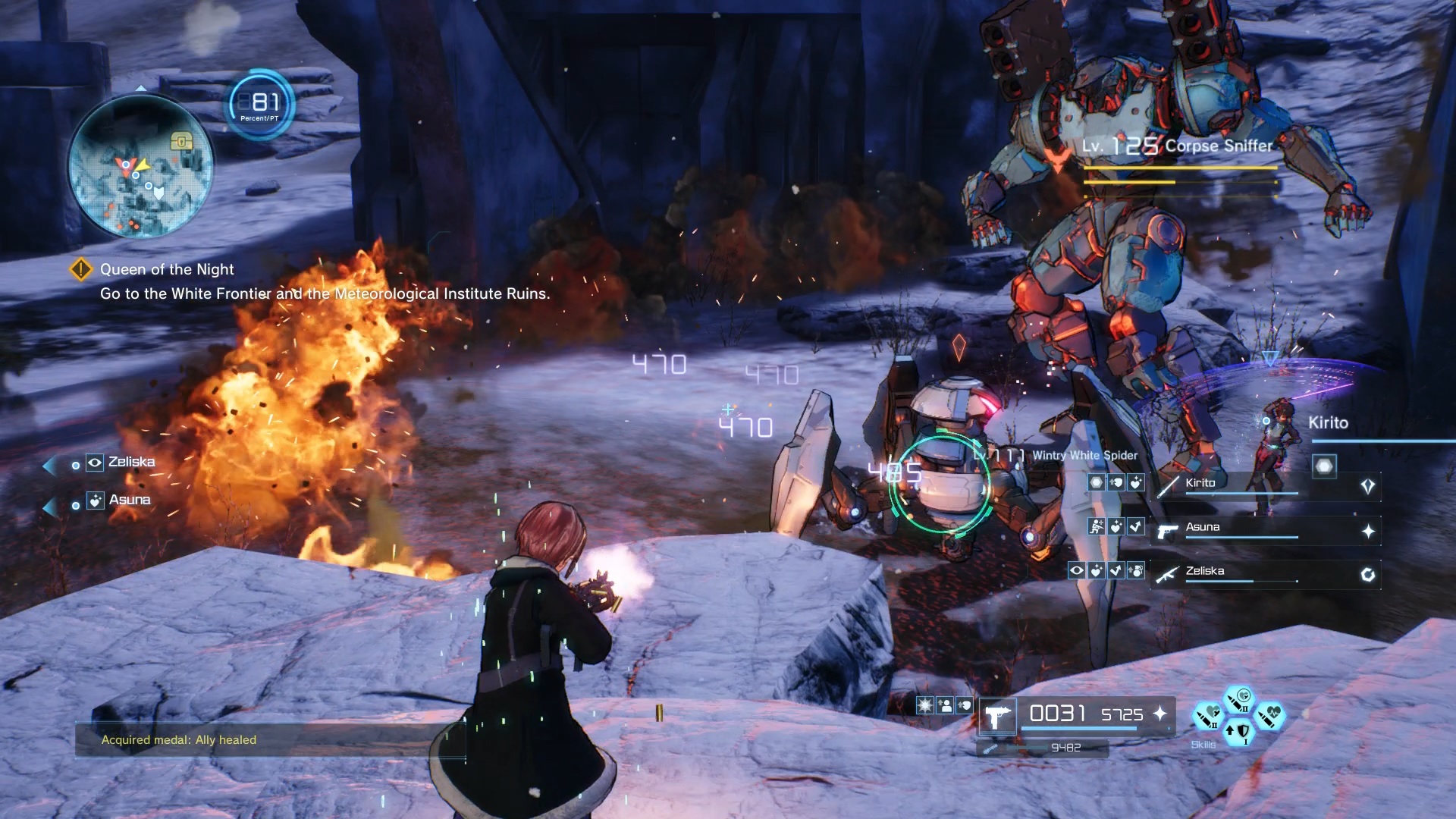
I found myself buying downloadable content this year. Despite being over a decade since the Oblivion horse armor, I’ve largely avoided DLC. Why? For the same reason I rarely 100% my favorite titles. If I beat something and feel satisfied, I’m ready to move on. I think this is mainly due to me chasing the feeling of surprise or experiencing something new. I don’t really need more of an already good thing.
I noticed a pattern in the games I started buying DLC for; they’re almost always releases that have promise yet come short on delivering. In addition to playing close to 100 hours of Sword Art Online: Fatal Bullet, I bought all of its DLC. Not because I love it, but because it felt like there was something there I could love. It never quite fulfilled what I wanted it to be though. I don’t regret my commitment to the title. At the very least, I can say I gave it every chance I could.
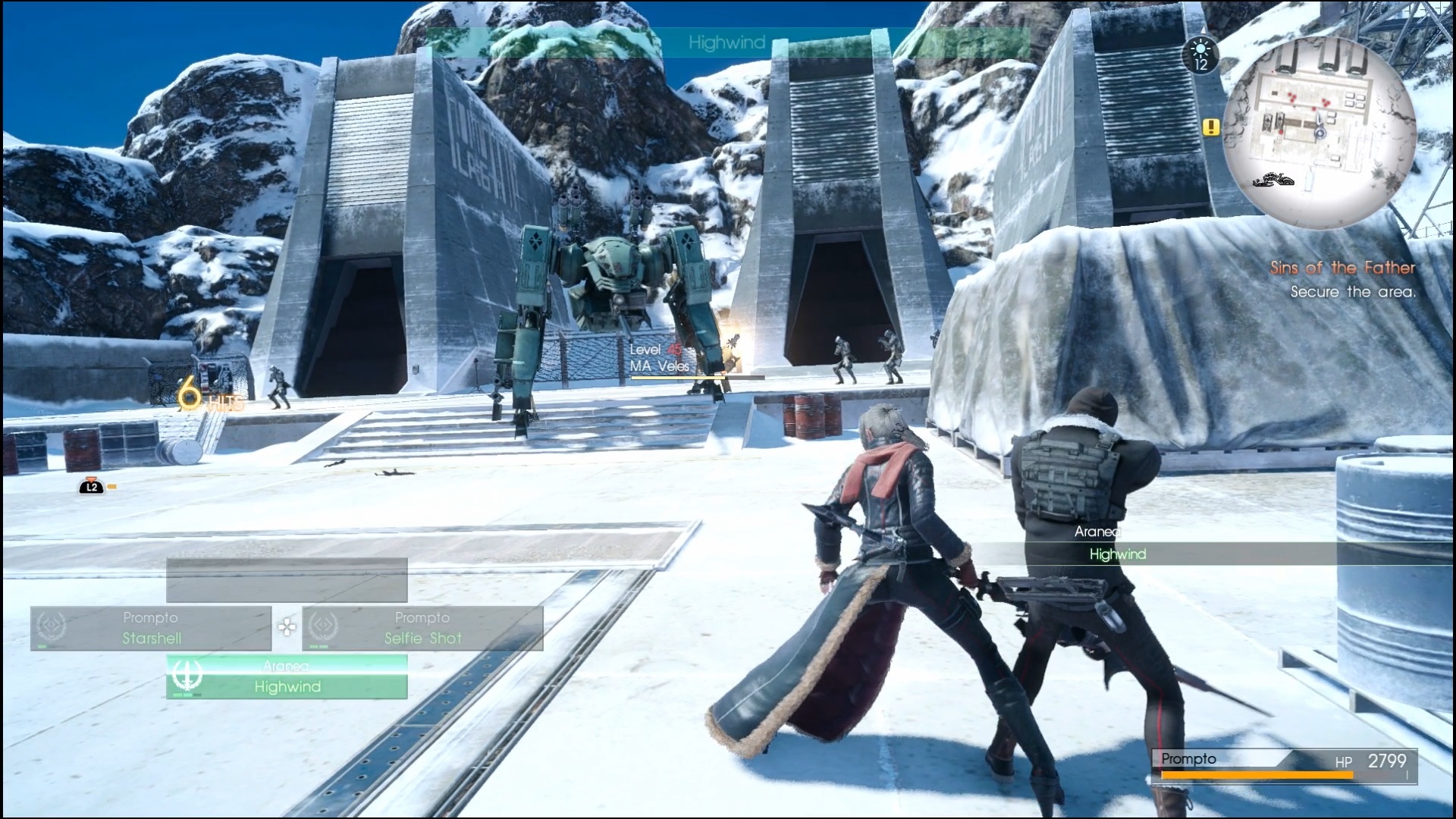
However, Final Fantasy XV’s DLC almost reshaped my feelings on the game entirely. I don’t like the majority of the base content for a variety of reasons, including the holes left behind by its rushed development. But the supplemental downloadable content? It’s great! They’re focused and well-paced while also having significant mechanical, as well as structural, difference from Noctis’ story.
Likewise, the content filled in some of the sorely lacking parts of the plot. The core companions finally get their full character development. The main antagonist gets some much needed backstory, with a neat spin on the Warrior of Darkness concept. The multi-player is pretty fun, too.
If you want to take some extra money off of me – make your games just disappointing enough that I keep throwing dollars at it.
Related Content
Sword Art Online: Dissonance of the Nexus Podcast
Final Fantasy XV Prompto DLC Podcast
Quick Play – Final Fantasy XV: Comrades
Cherish Your Hearing
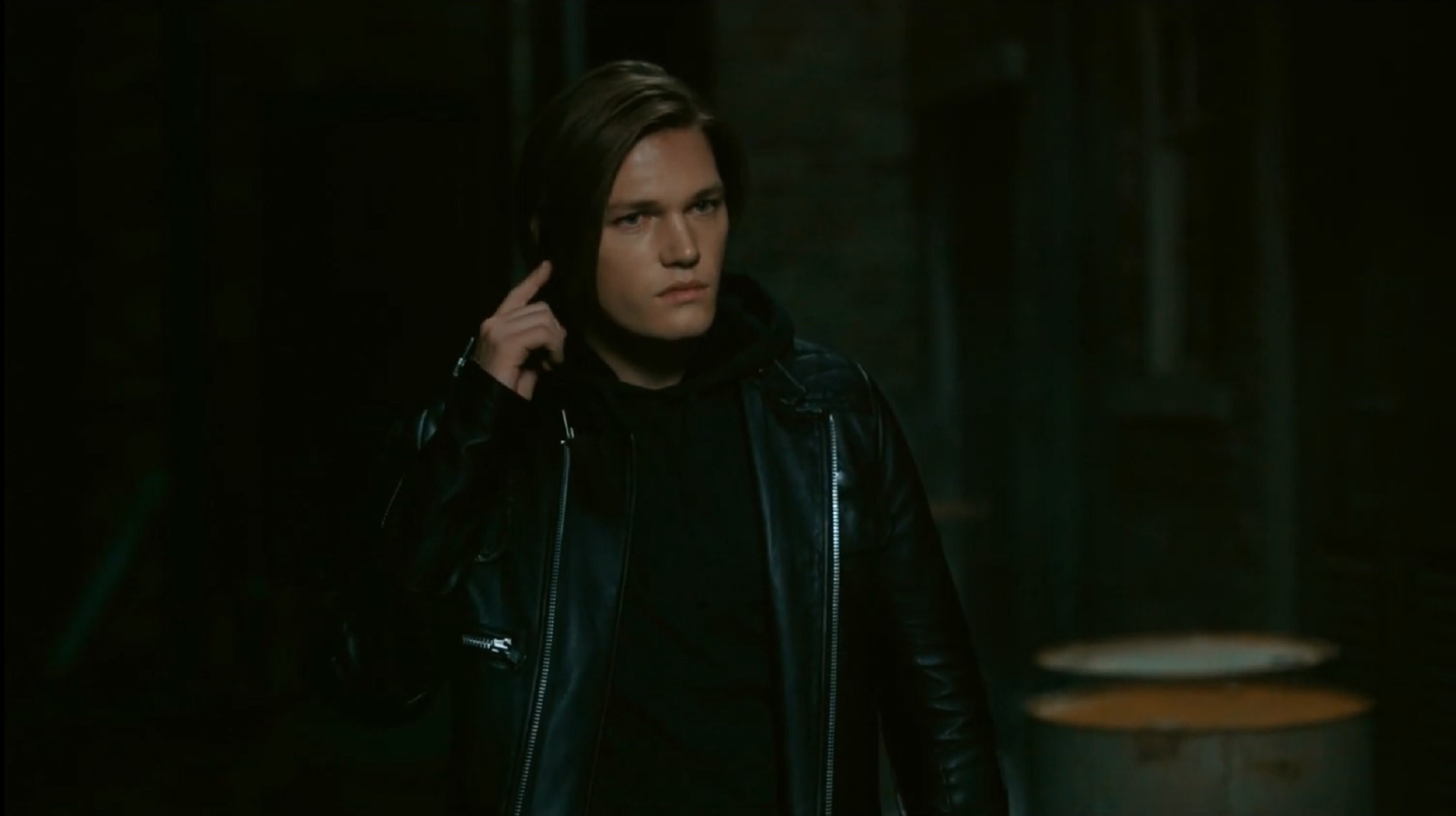
Sound design isn’t always noticeable. Even when well-done, it usually fades into the background.
So what happens when almost all sound is removed? For The Quiet Man, which already has its fair share of problems, it’s kind of awful. The muffled thump of punching people makes the already floaty combat lose its sense of impact.
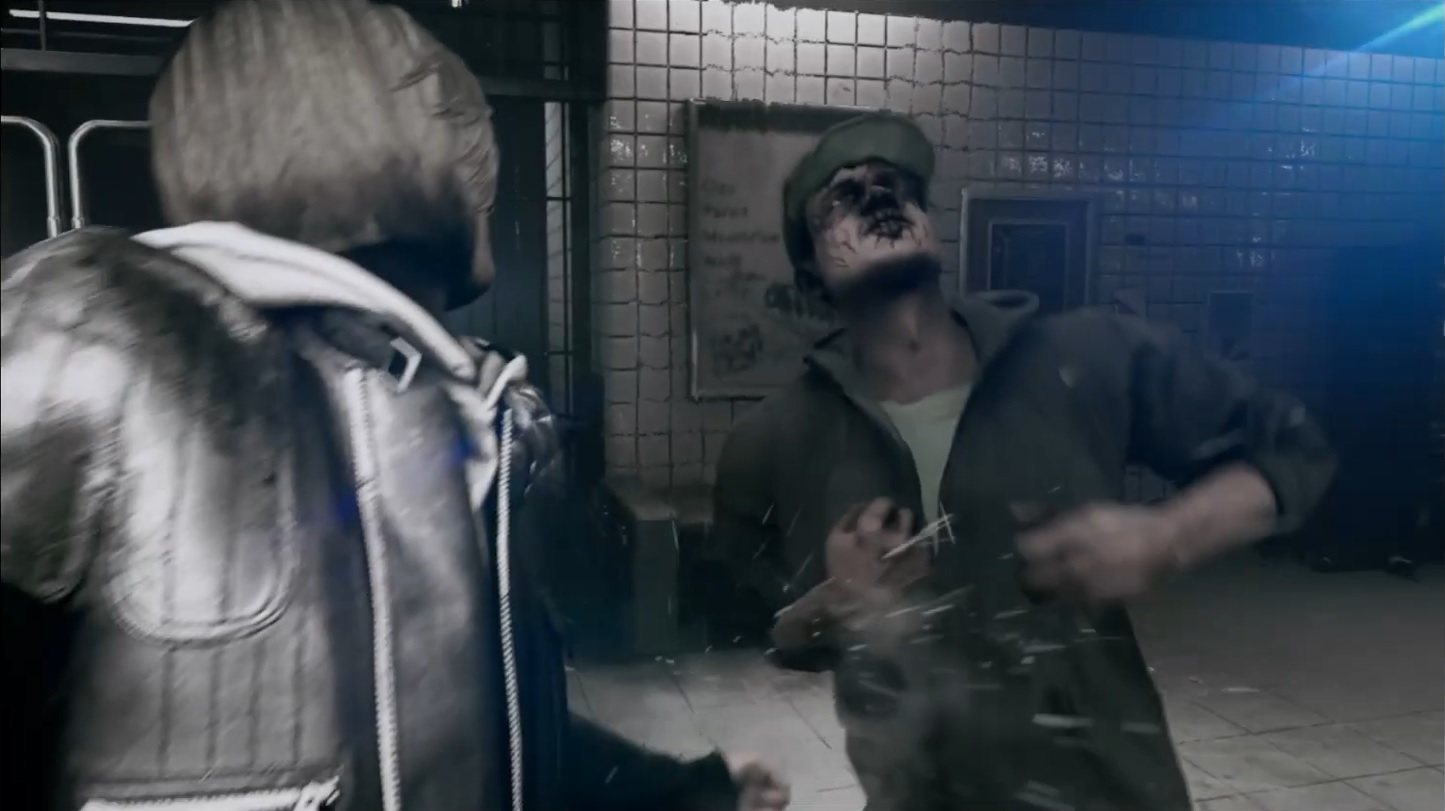
On the second playthrough, which actually has sound, the full thud of the punches has a surprisingly big effect on the satisfaction of combat. It’s not good, but feels competent enough to carry the short experience. It’s surprising how a bit of sound can change a game.
I wish I could say there was some benefit to the initial silent playthrough. I really can’t think of any. You’re robbed of some great voice acting, too. SOL 33 for life.
Related Content
The Quiet Man Stream Archive
Bloodstained: Disappears into the Night
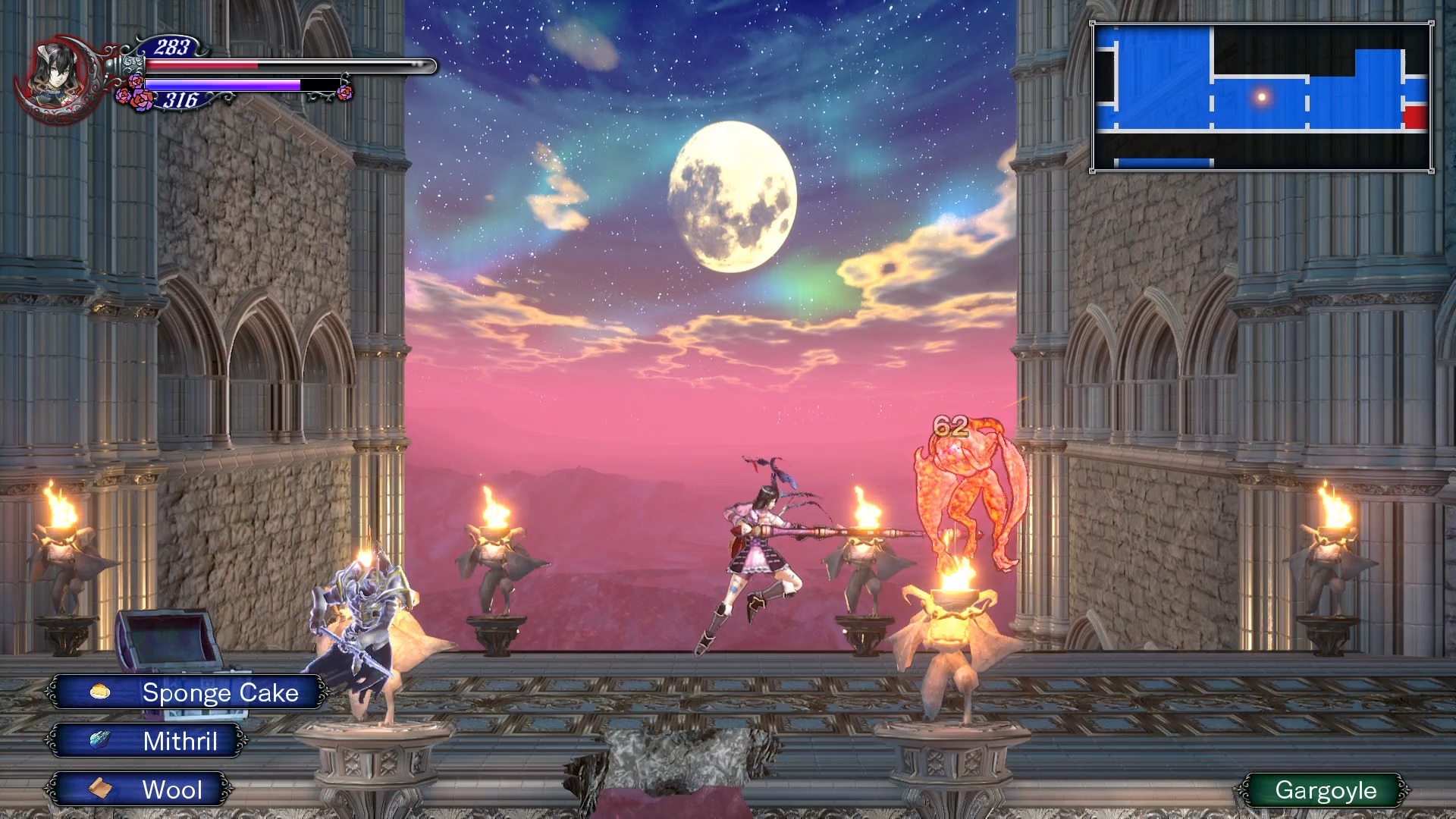
I’m a big Castlevania fan, though I’m an outlier in saying I wish Koji Igarashi had gone about creating Bloodstained: Ritual of the Night differently. The Metroidvania formula is a great template. That being said, what matters is what is add to it.
Most of the portable Castlevanias tried to explore new directions, even within their budgetary limitations. Bloodstained: Ritual of the Night, while greatly expanding certain concepts, mainly builds upon the work they’ve already done. It exists almost solely as “Igarashi’s next project” rather than anything else.
I’ve had two experiences that have justified these feelings for me.
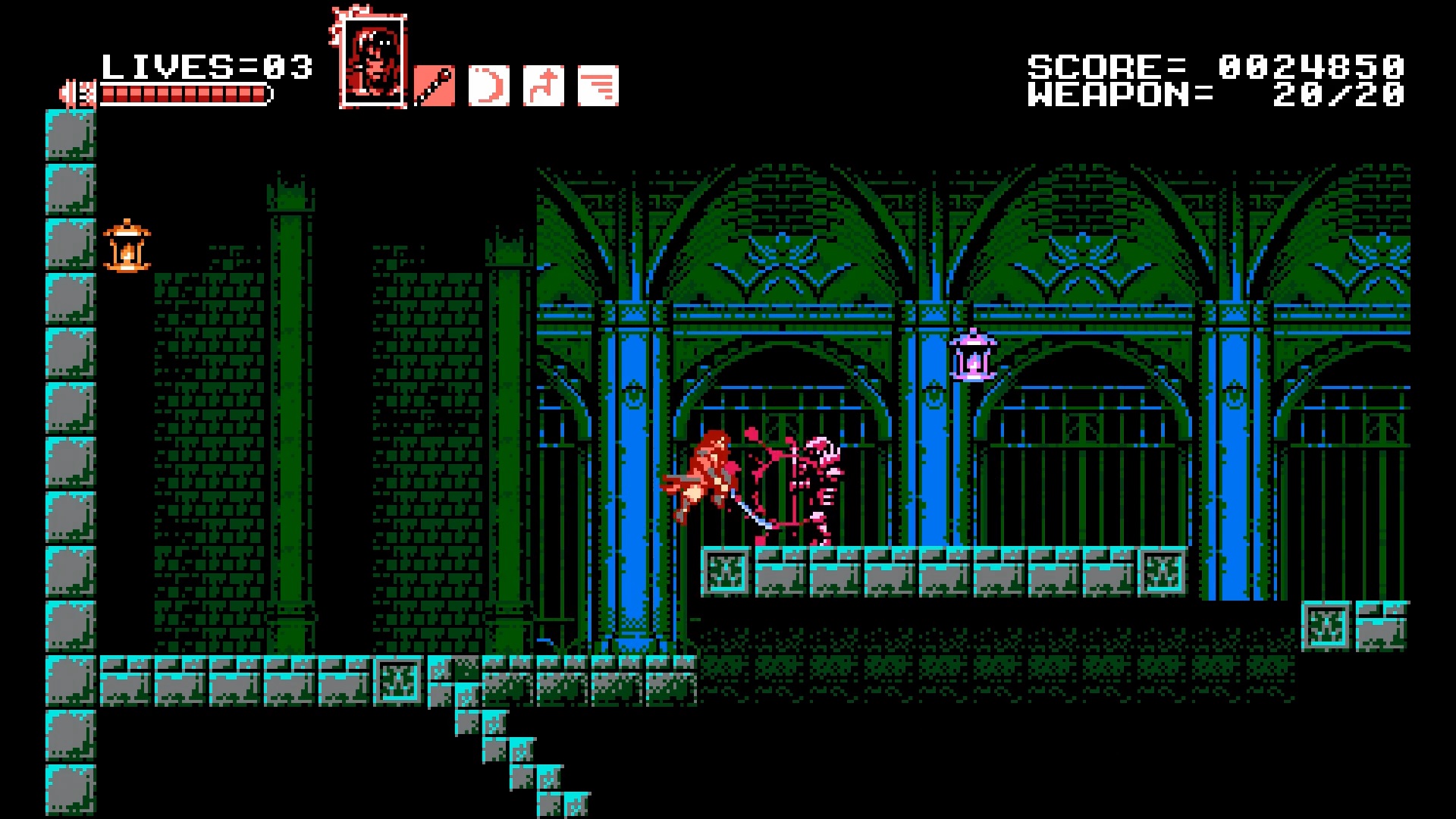
The 8-bit spin off, Bloodstained: Curse of the Moon, far exceeded my wildest expectations of what a throwback game can be. Not only is it faithful to classic Castlevania, it also greatly expanded the concepts found in Castlevania III. In some ways, it’s almost a pseudo-sequel to a now 30-year-old release. More than that, an alternate playthrough completely reinvents the original mold. This creates something that feels like a strange mix of the franchises’ 8-bit stiffness with the acrobatics of a title like Ninja Gaiden.
Even with sharing the Bloodstained name, Curse of the Moon has a fundamentally different design than Ritual of the Night. So I would understand the argument that the ambitions of this small spin-off wouldn’t necessarily translate to first true Igavania in a decade. Though recently I played a Castlevania-style game that re-invented its world structure to create something distinct – Shaman King: Masters of Spirits.
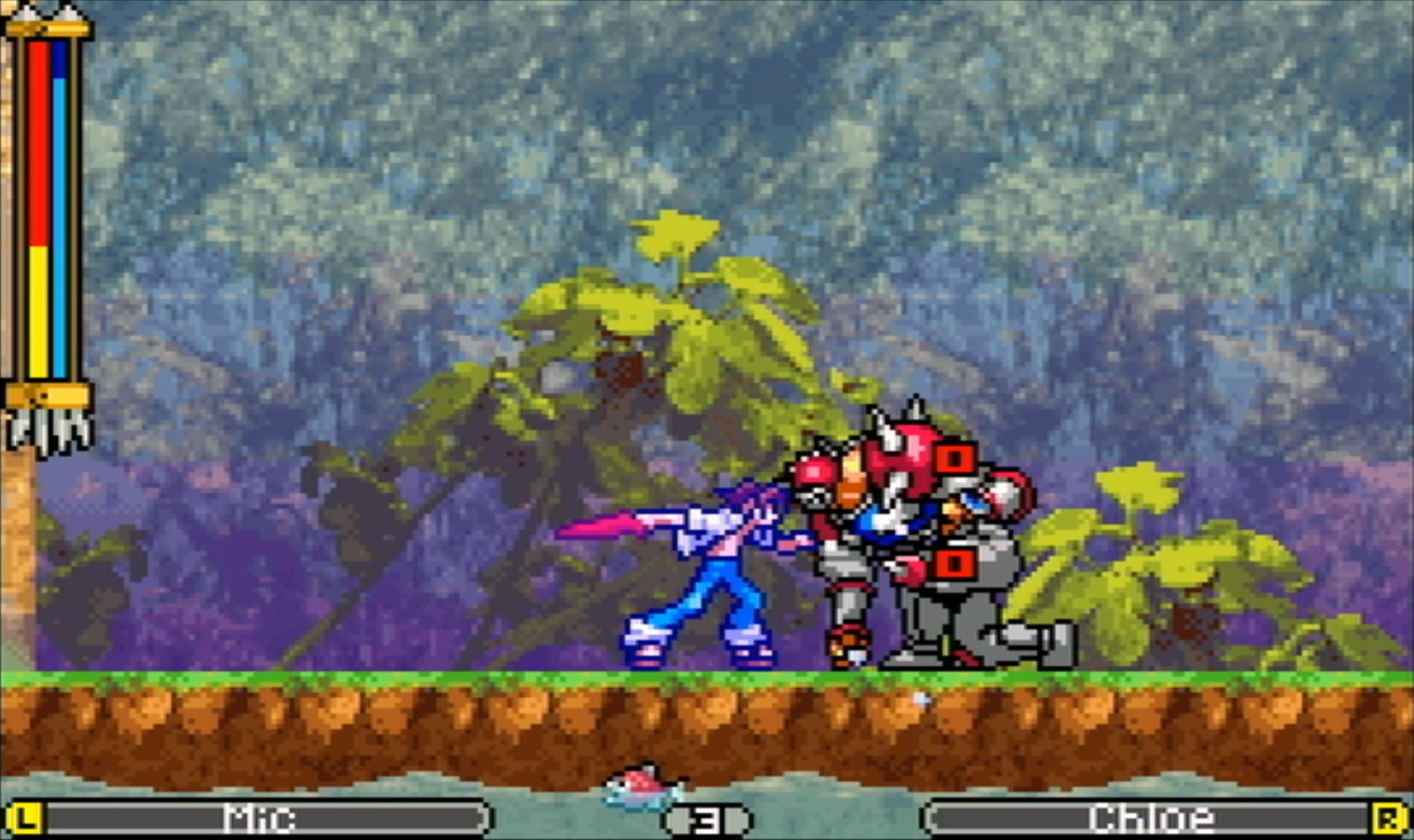
When it comes to the moment to moment gameplay, this Game Boy Advance series based off the Shaman King license is similar to its contemporary Castlevania releases. It uses the same exploration-based action platforming and, heck, it even has Spirits. These behave almost exactly like Castlevania’s Souls as well as Bloodstained’s Shards. Ultimately, the layout of this map and the level design that accompanies it creates what feels like a sprawling world compared to the compact nature of Dracula’s castle. It accomplishes this while seemingly using the same engine as the Casltevanias for GBA.
Honestly, I forgot that Bloodstained: Ritual of the Night came out until I happened to see my Quick Play of it again. Shaman King: Master of Spirits and Bloodstained: Curse of the Moon? Those experiences will stick with me for years to come.
Related Content
Shaman King: Masters of Spirits Review
Quick Play – Bloodstained: Curse of the Moon
Quick Play – Bloodstained: Ritual of the Night
Keep on Gaming Gamers
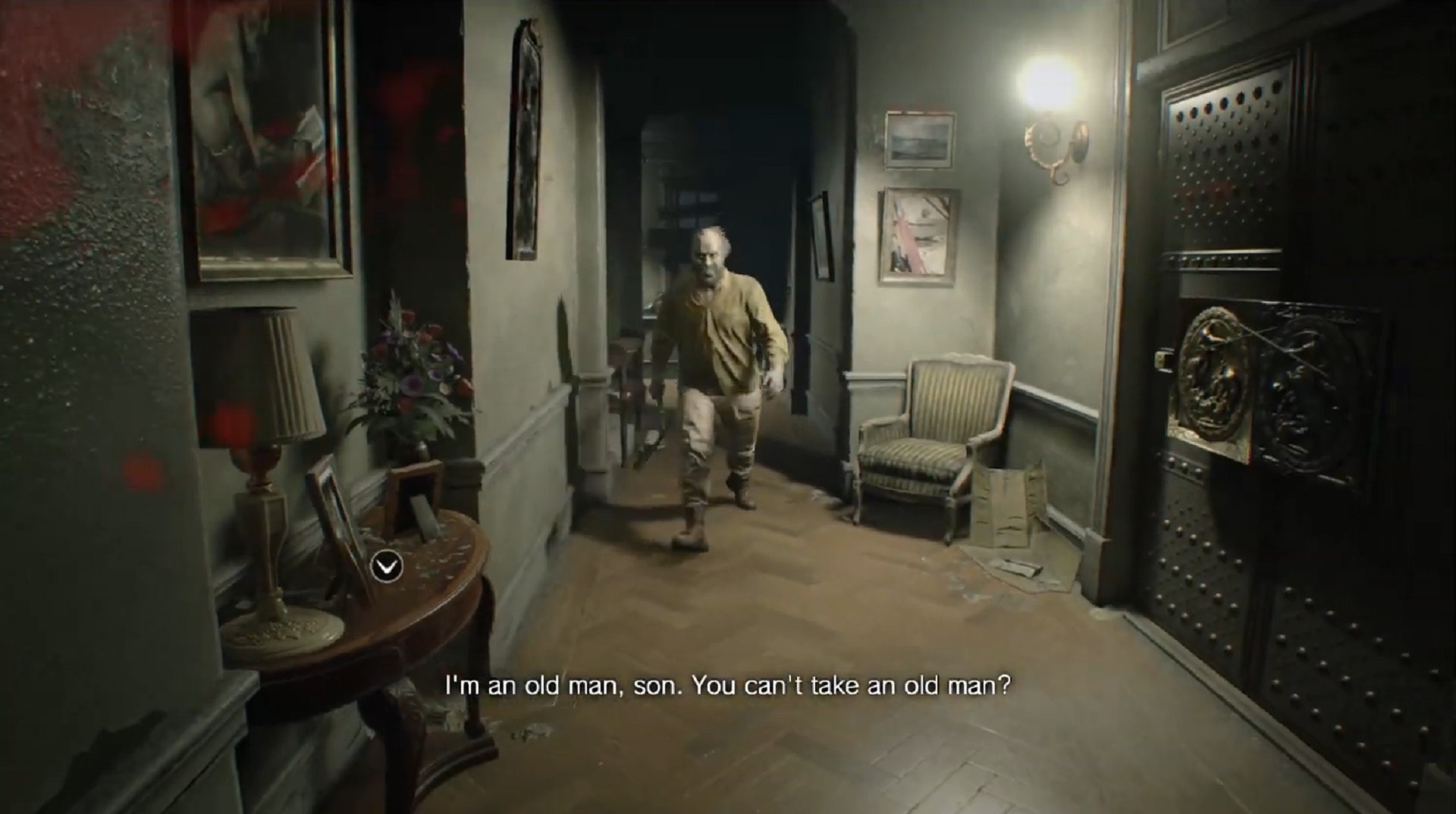
I can’t blame anyone for dropping a game because they’re not having fun with it. For most people, entertainment is the ultimate goal. Yet when it comes to the discussion of titles, I think at least getting to the credits is important.
I started Resident Evil 7 when it released and immediately hated it. The opening chapters make the player excessively vulnerable while also severely punishing them for what feels like just existing. I dropped it pretty quickly.
This year, I finally revisited it. I pushed through despite still hating the first third. I’m glad I did. Halfway through, it features one of my favorite areas of the franchise.
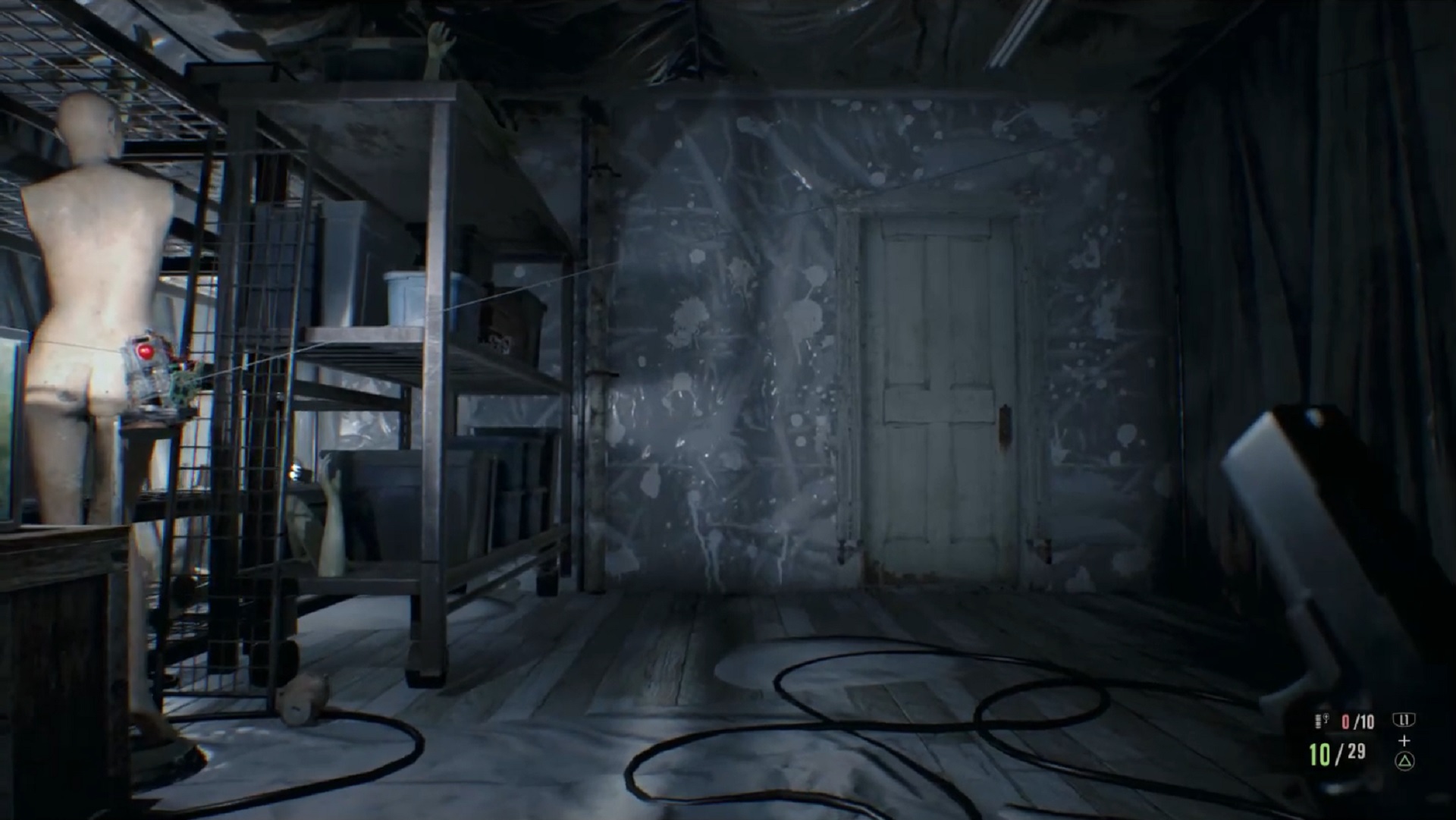
Instead of a dark environment filled jump scares or helpless situations, it’s in a well-lit warehouse that’s full of traps that can be disarmed. It’s tense, but careful play will let you get through unscathed. The bright lighting as well as the real, though static, threats give a different sense of fear.
It’s quickly followed by a fun escape-room style sequence where you’re tasked with solving a series of puzzles in a small set of rooms. Theeen… the game goes back to being kind of average. That being said, it’s never as frustrating as it is in the beginning.
Resident Evil 7 is a roller coaster ride of quality in its design. This experience reminds me of the importance of sticking with a title til the end. Through that commitment, I found that I don’t hate it. I just hate how it starts.
Related Content
Resident Evil 7 Stream – Complete Playthrough
Taking it into your Own Hands
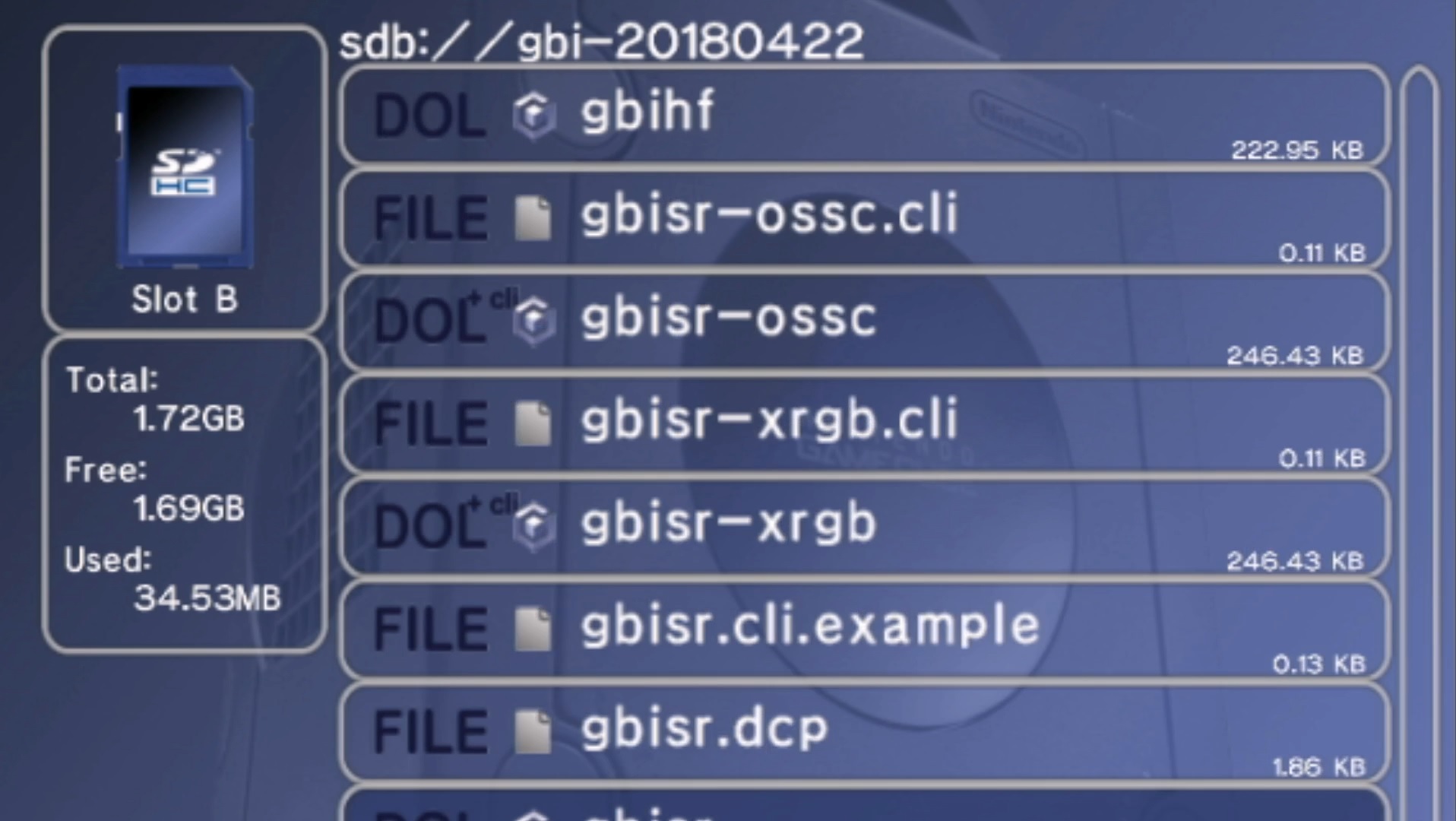
I went down a pretty deep hole of homebrew software and hardware for consoles. From playing unlocalized releases in English to getting the best quality picture, it’s great that there are solutions out there to solve these niche yet growing problems. Software modification has weirdly enough made the Wii U one of my most used platforms.
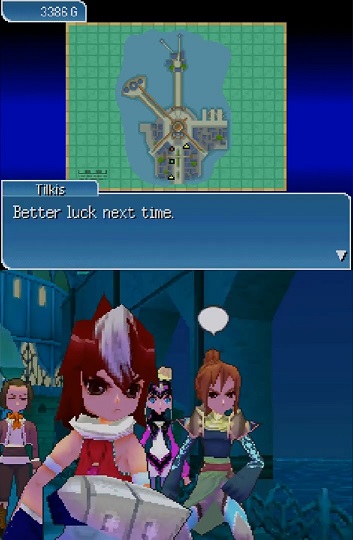
Most publishers don’t care about or can’t justify projects like localizing a DS game from a decade ago or making sure you get the most accurate experience when playing your favorite classics. But if someone on the internet makes it their goal to fan translate a title or build some new solution for a platform, we all reap the benefits.
Some smaller companies are also starting to build products off of some of these. I think it’s great seeing company-supported purchasable hardware for older consoles. Even some larger publishers are building collections based off of open source emulators. It opens up the audience beyond those who like to tinker with different software or hardware solutions.
If you’ve ever contributed to a project that adds something new to gaming, thank you for your efforts. People like you have helped me a lot this year.
Related Content
Nintendo DS Games Running on Wii U Stream
Tales of the Tempest (Fan Translation) Stream – Complete Playthrough
Dreamcast Toro Box Stream
Games that Surprised Me
I found some gems this year, so I thought I’d highlight a few of them below:
We Ski

The Wii is infamous for its shovelware. On its surface, you might think We Ski falls right along side games like Chicken Shoot. That’s far from the truth.
I love pretty much everything about We Ski. It almost perfectly hits the console’s target family-friendly audience, though does so in a novel way. It’s not about being the best, having a career, racing or doing tricks. You’re on a vacation. Enjoy the Ski park filled with friendly competitions as well as people who need help with mundane issues. Or you could just Ski, man.
It’s cute, relaxing and has a weirdly charming conclusion. If you’re OK with motion controls, I can’t recommend We Ski enough.
Related Content
Quick Play – We Ski
Doraemon: Nobita to Mittsu no Seireiseki
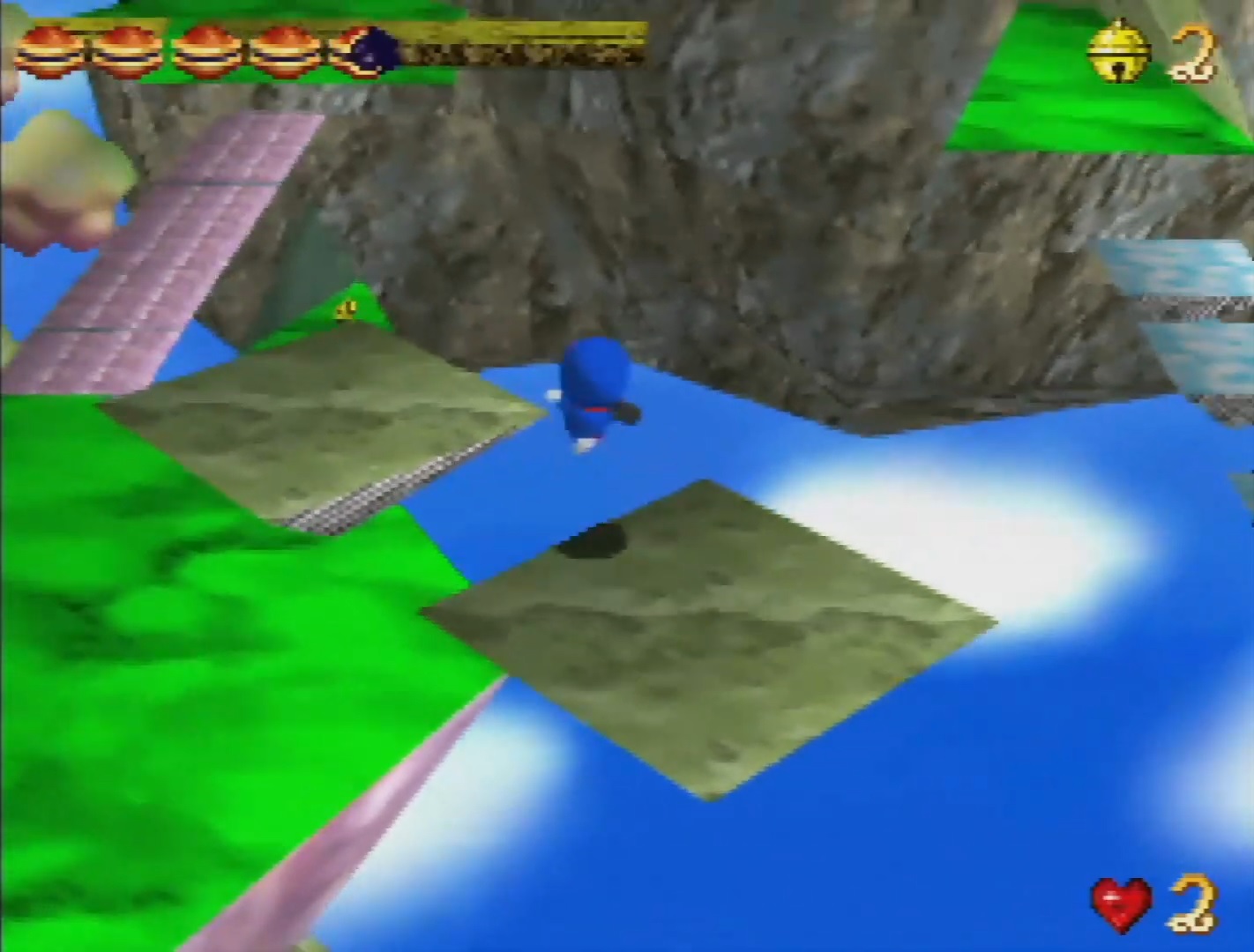
Despite being a licensed game, I had a lot of fun with the first Doraemon for Nintendo 64. It may not hold up as well as other more popular 3D platformers of the time, but it’s competent, short while also having quite a bit of variety. I love being able to switch between four playable characters on the fly, each with their own stats and weaponry. Likewise, there’s something charming about its world progression. Instead of collecting a large number of a single object, you find unique items that unlock new areas.
It can be a bit rough control wise. Still, I’d say give it a go.
Related Content
Doraemon: Nobita no Mittsu no Seireiski Stream – Complete Playthrough
First Kiss Story

You knew it was coming.
There’s no way I could have predicted how much of an obsession I built up around First Kiss Story, a visual novel I literally cannot read. I have a small shrine of First Kiss Story goods now.
Outside of its cool mini-game, I honestly can’t recommend most people check it out. It feels like a pretty straight-forward high school romance story, though I think that’s also what made it so easy to understand. Even with being entirely in Japanese, I feel like I have a decent grasp on the overarching plot lines. The voice acting and graphics helped a lot. However, I did take a year of Japanese nearly half a decade ago. So I didn’t go in completely blind.
Most people probably don’t want something like this. If you’re looking to try to penetrate a Visual Novel in a foreign language, this one feels appropriate.
Related Content
An Accidental First Kiss Story (Article)
First Kiss Story – Top Twelve First Kisses Podcast
First Kiss Story Stream – Dating like it’s 1998
Site Content and Plans
2019 Post Results
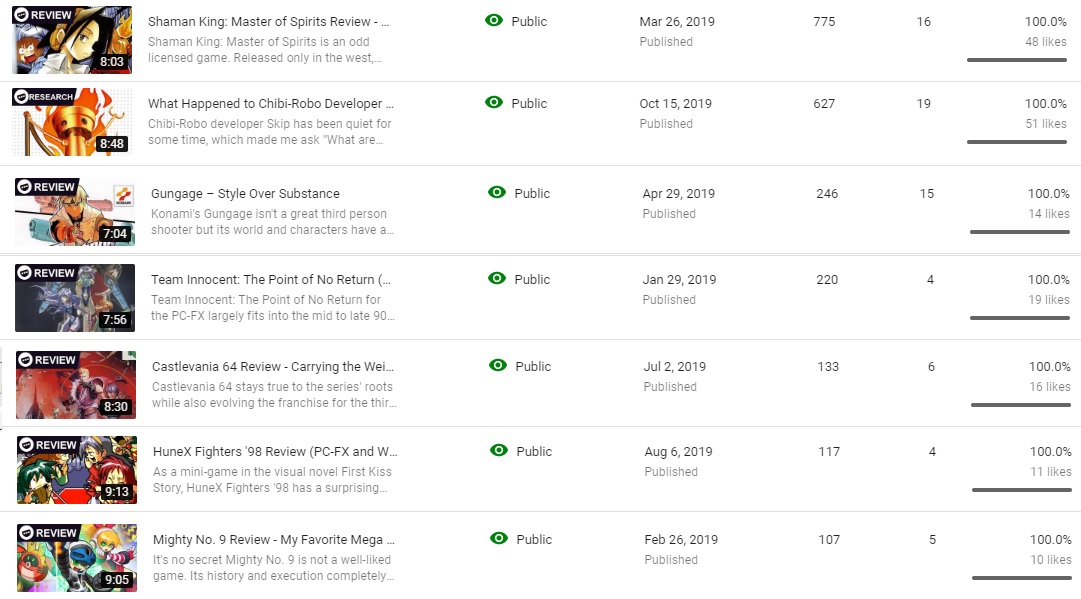
I failed to meet my goal of one featured video a month. Still, I am generally happy with my output this year. Thankfully, I think that was reflected with increased views, comments and subscribers. Going with a video focus seems to have been the right choice.
Thank you for all the feedback. I’m particularly happy with the Shaman King: Master of Spirits review along with my video on the current state of Chibi-Robo’s developer, Skip. It doesn’t seem like there was a single dislike rating on the main videos so, maybe I’m doing something right?
Games I’ll be Playing in 2020
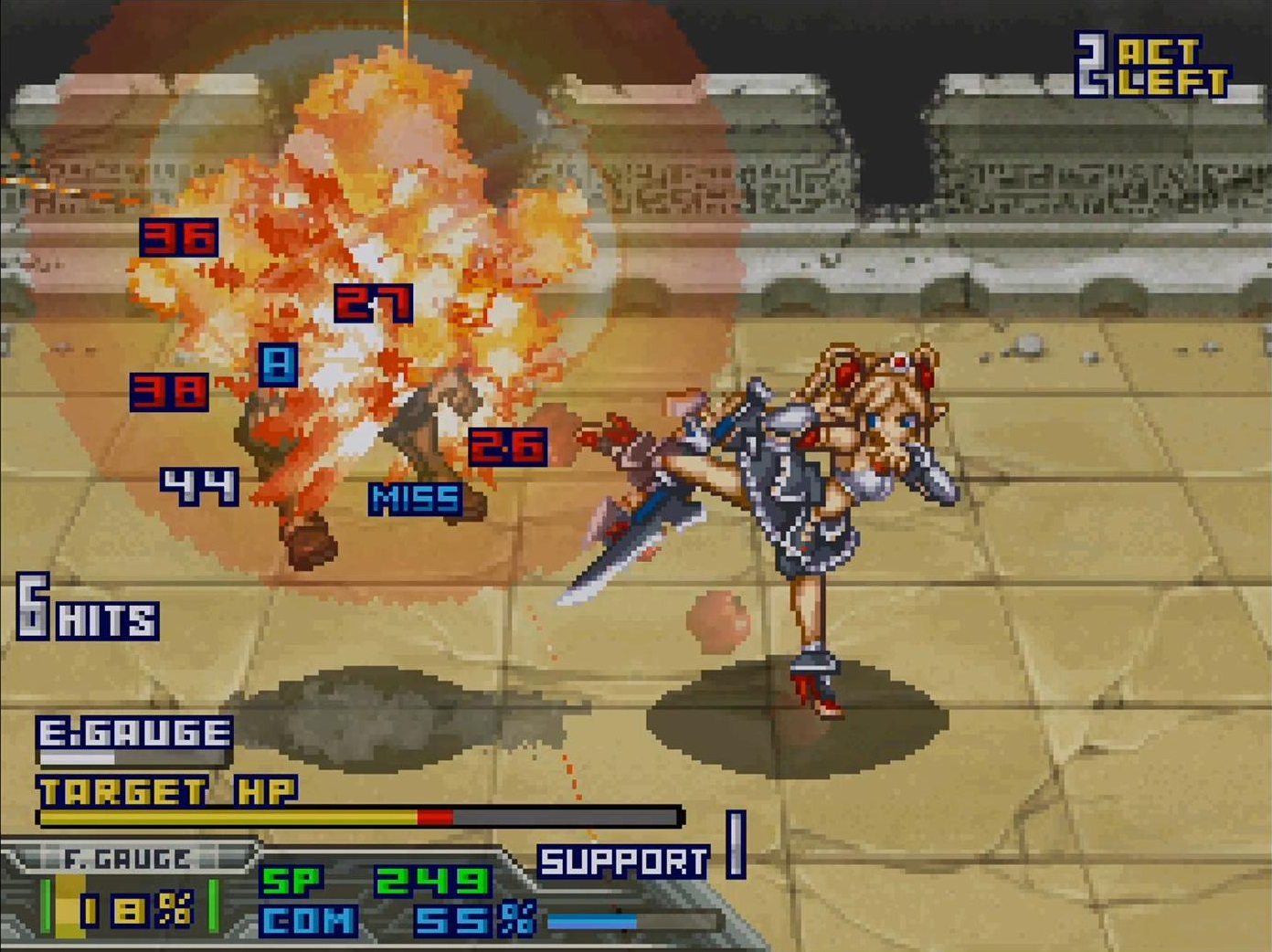
I feel like I say it every year, but Xenoblade Chronicles X will finally be on the docket. Now that Final Fantasy XV is out of the way, I’m ready to try to recoup the 100 hours I lost from my exploded save file.
In addition, I may make more of an effort to focus on some of the lesser Monolith Soft releases. I’ve neglected most of their portable games, so my plan is to try to check those out. Considering they’re my favorite developer, I probably should pursue these. I won’t guarantee any major coverage of them. Because they’re all lengthy RPGs, I’ll try my best to sprinkle some shorter titles in between.
2020 Content
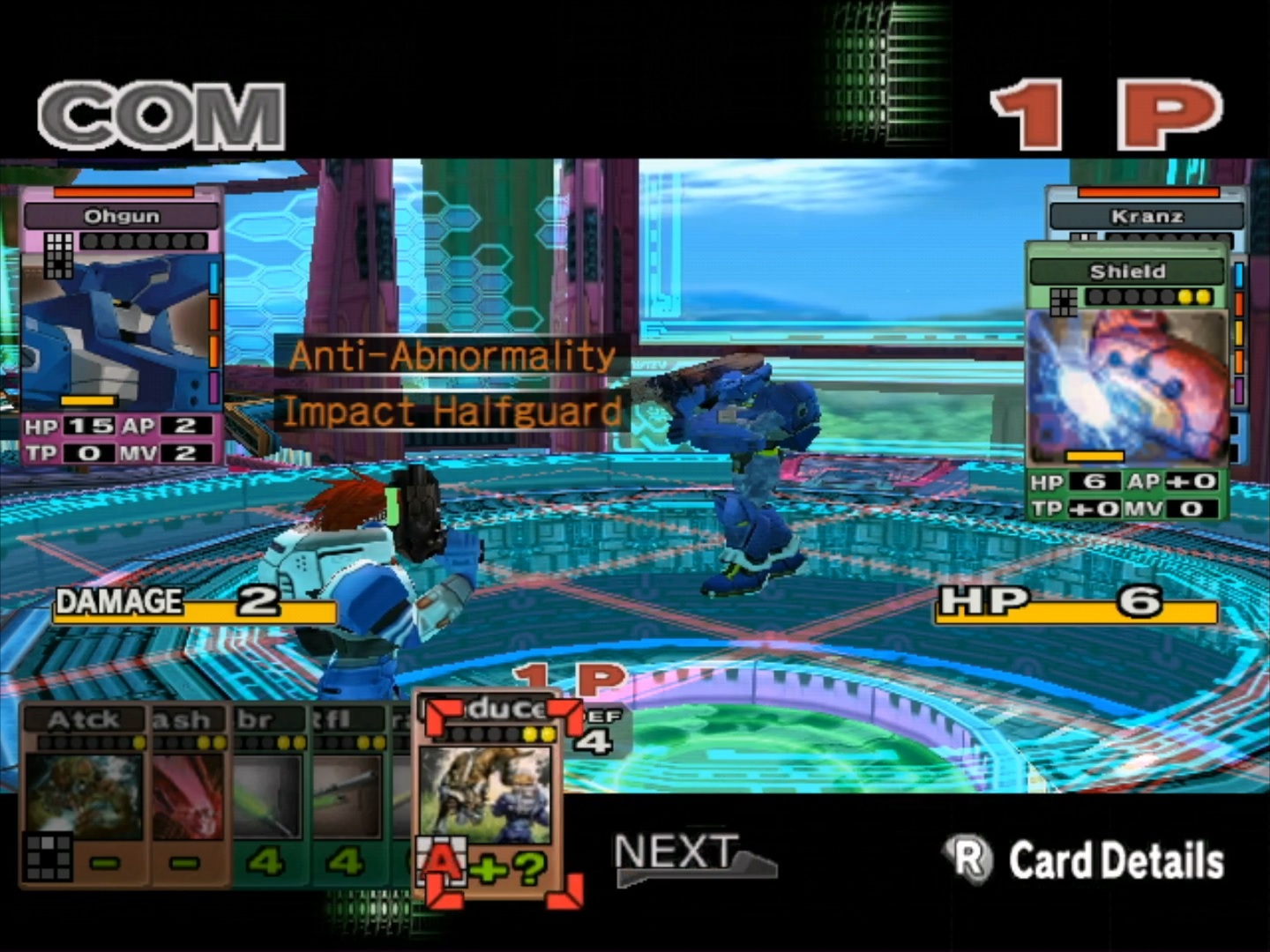
I have no solid plans at this time. If I had to make a guess, you’ll likely see some content related to SEGA as well as some Monolith Soft games. I have gained quite a bit of confidence in the quality and structure of my videos, so I may revisit some titles that I previously felt like I couldn’t have, or haven’t, done justice.
Unfortunately, one video a month is a pace I doubt I can consistently meet. I’m hoping to shoot for at least one every two months. If I can make them more often, I will. In hopes of speeding up production, I may convert some articles that failed to get much attention to expand their reach.
I’m also going to try to do more collaborative works when possible. This will most likely manifest in podcast form, similar to the Lost Kingdoms II episode.
I’m always open to feedback, so please let me know if there’s anything else you’d like to see.
Thank you again for your time and support!

